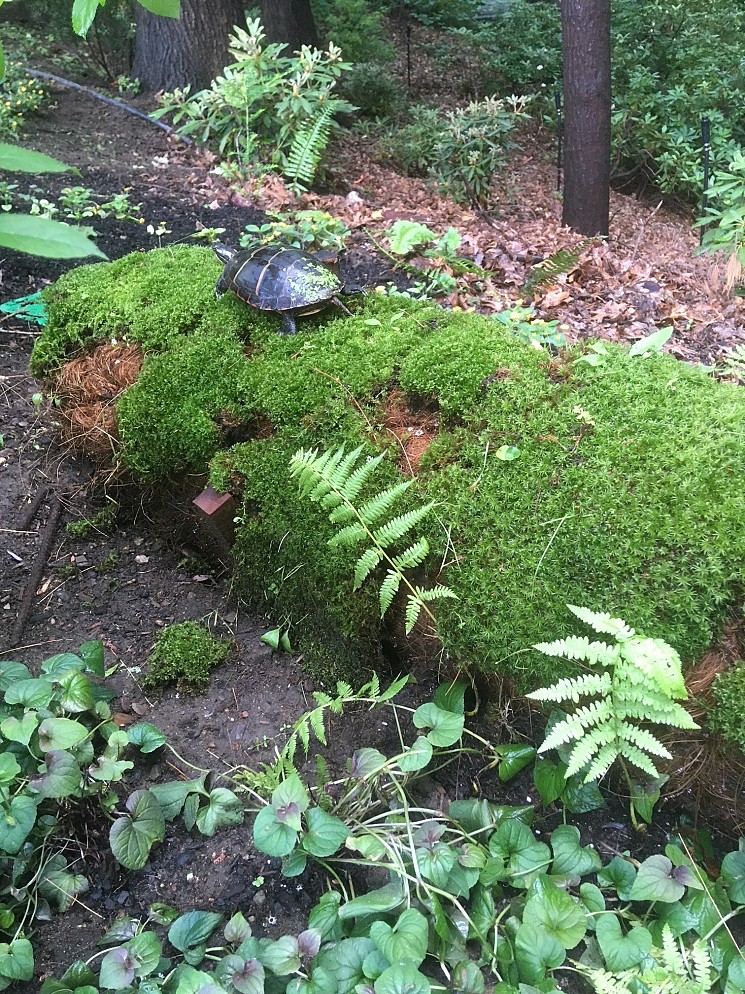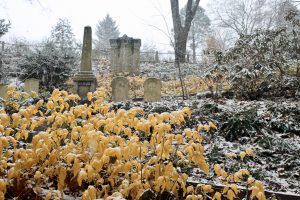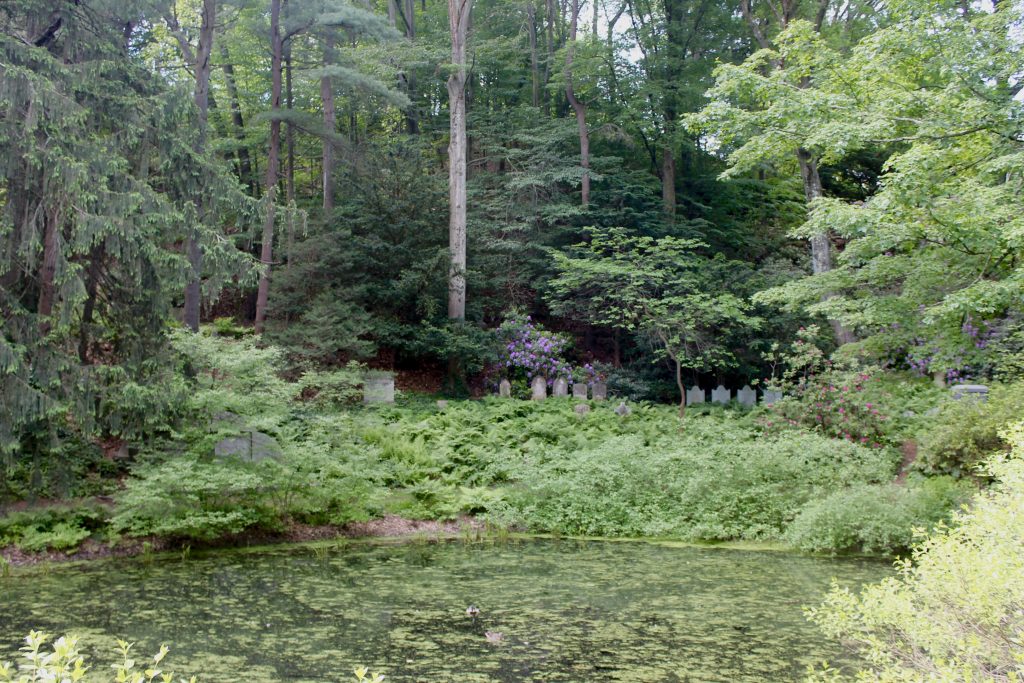Eternally Green: Consecration Dell Habitat Expansion Continues

This past spring, we undertook a large native planting project to improve habitat and sustainability on the upper slopes of Consecration Dell. Thanks to a grant from the A. J. & M. D. Ruggiero Memorial Trust, we expanded the native plant community that supports the many species of wildlife inhabiting the Dell. This was our latest section of woodland restoration throughout the Dell, which began over twenty years ago and is finally nearing completion.
This year’s project, installed by Whole Earth Landscaping, was at a technically challenging site on the Dell’s steepest southern slopes where Violet Path splits.The project began with removal and control of undesirable vegetation, made more complicated because we had to avoid using herbicides in areas where wildlife exposure is a risk. The edges of the slopes were then stabilized with fieldstone boulders, coir logs (pressed coconut fibers), salvaged tree logs and stumps, and were planted with groundcovers. This strategy allows new plantings to establish and thrive, and creates a more sustainable path structure than the crude pipe and plank system that we used here for years to stabilize slopes. These would too often degrade and require replacement. Once established, the plantings will allow rainwater to be absorbed at the root-zone or move down-slope safely without washing away soil. This approach has been successful in other areas of the Dell, where erosion has finally been checked and understory vegetation is now established. The contractor then mulched selected areas on the slopes to prevent plant installation from disturbing existing duff layers created by exposed soil. Overall, the project featured the installation of nearly 8,000 plants and temporary irrigation on the site. By introducing sufficient numbers of plants and providing enough initial care in the first two years so they can thrive, we will dramatically improve the ecological quality of the Dell’s vegetation.

Dell Slopes in the Snow
We have developed the plant list carefully over the years with input from wildlife and horticulture consultants plus actual trial and error field experience. Beneath the tree canopy dominated by Red, Black, White, and Scarlet Oaks, we’ve installed low-growing plant species designed to offer nesting materials, protection, and food sources for wildlife.
These plants include ferns (Hayscented Fern, Christmas Fern, and Lady Fern); herbaceous groundcovers and woodland wildflowers (White Baneberry, Wild Ginger, Mayapple, and American Spikenard); and shrubs (Winterberry, Rosebay Rhododendron, and Snowberry).
We also added species that provide nuts, seeds, and fruits to a wide variety of birds as well as Mount Auburn’s large populations of small mammals, including gray squirrel, fox, raccoon, skunk, groundhog, and opossum. As it matures, the new understory vegetation will also provide much-needed shelter and nesting materials for many species of birds, mammals, and amphibians.
Mount Auburn has long been recognized by ornithologists as a precious refuge for birds in metropolitan Boston, which is especially crucial given current habitat trends. According to the annual State of the Birds Report, a comprehensive analysis on bird populations in the United States that has been published by the Secretary of the Interior since 2009, nearly a third of the nation’s 800 bird species are endangered, threatened, or in significant decline due to habitat loss, invasive species, and other threats. Within Mount Auburn, designated an Important Bird Area by the Massachusetts Audubon Society, there are few sites as significant as Consecration Dell for wild bird habitat. Many of the more than thirty species of migrating wood warblers observed at Mount Auburn each spring are found in this woodland. Five species of thrush (Hermit, Wood, Swainson’s, and the unusual Gray-cheeked and Bicknell’s) are also found there during spring migration. Wood Thrush is one of the species listed as threatened in the Secretary of the Interior’s report. Nesting birds include the Black-capped Chickadee, White- and Red-breasted nuthatches, and Downy Woodpecker.

While this area already hosted significant numbers of birds, it was devoid of the woodland understory vegetation necessary to constitute a “shrubland habitat,” identified in our Wildlife Action Plan as one of the critical missing habitats at Mount Auburn. Although creating this habitat” is just one part of our planting work, it is a significant priority. Of the forty bird species associated with shrubland habitats in eastern North America, twenty-two are undergoing significant population declines. The expansion of this habitat will be a new and important resource for those birds at the Dell.
Now that this phase of habitat restoration is complete, the landscape will offer more food and shelter to the hundreds of migratory and resident bird species who visit and live in the Dell.
It will also improve the habitat for the resident populations of amphibians, small mammals, and countless species of insects. We are excited to have made another important step in enhancing Mount Auburn as a wildlife sanctuary, by establishing an ecologically-sound plant community that will be sustainable long into the future.
Leave a Reply to Elizabeth Wylde Cancel reply